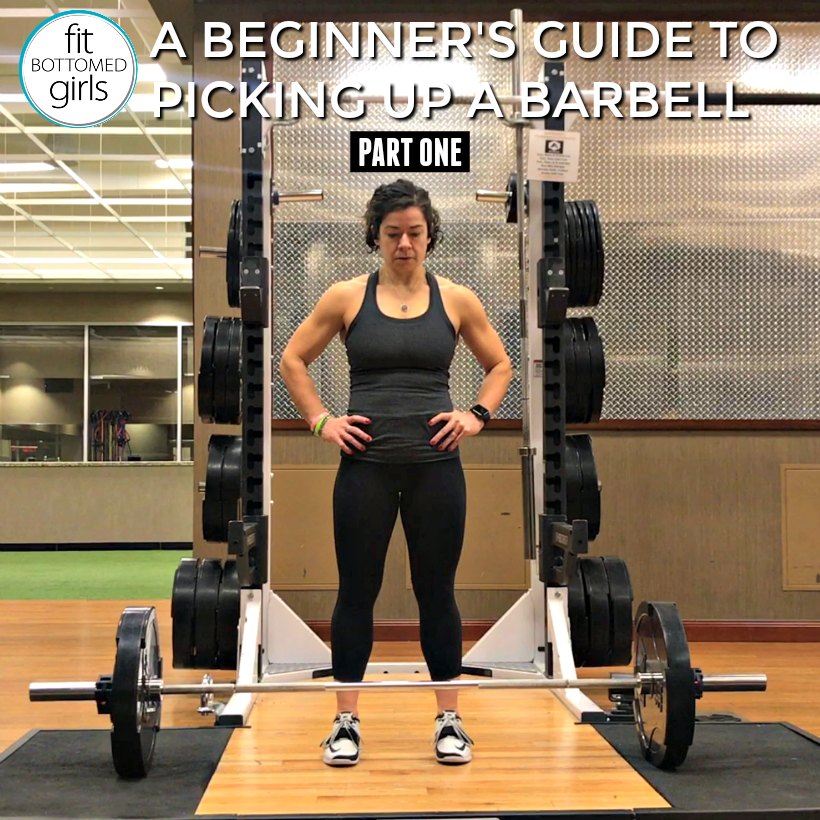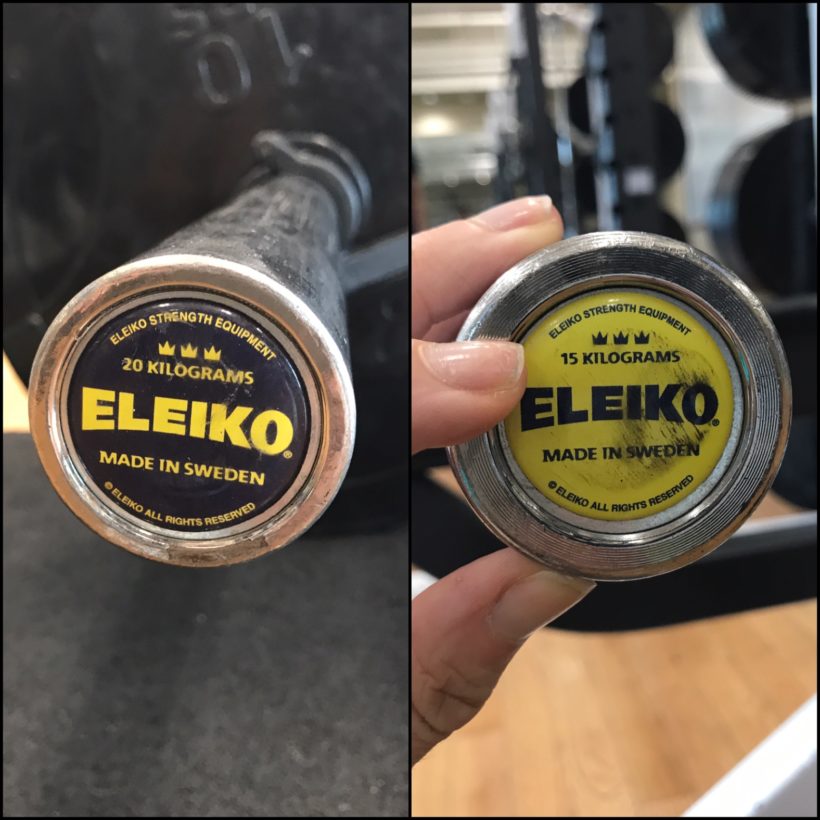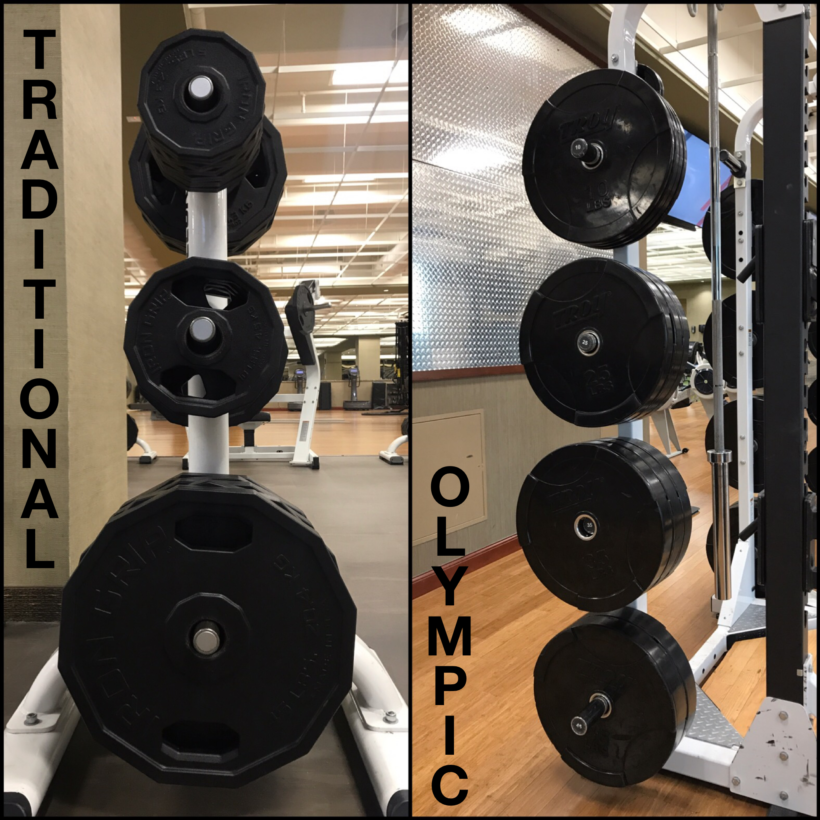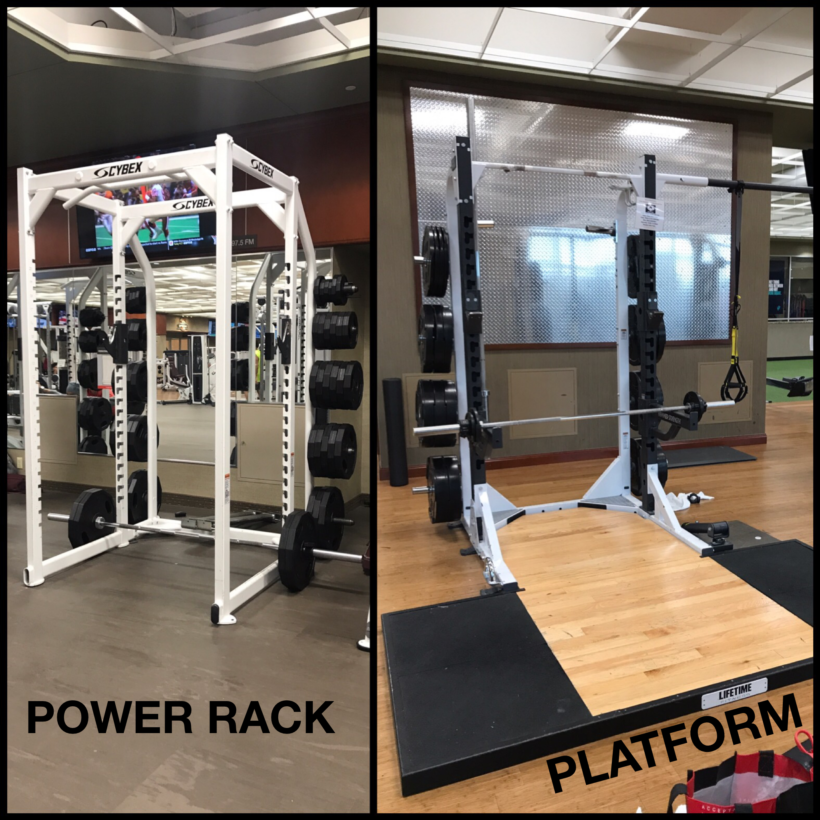A Beginner’s Guide to Picking Up a Barbell: Part 1

It’s no secret that I’m on a mission to get as many women as possible picking up barbells. It doesn’t matter what your fitness goals are; barbells are excellent tools to add to your arsenal.
But as someone who used to be super intimidated by barbells, I get that, for many women, there are some significant barriers — most of which boil down to a lack of readily available knowledge about the logistics of using them. However, that’s an obstacle I feel confident we can overcome.
So, let’s talk about the things you should know about barbells. My hope is that this two-part post (part 2 to come next week!) will serve as a comprehensive resource to provide the information you need — and inspire you to pick up a barbell on the regular.
Beginner’s Guide to Picking Up a Barbell: The Equipment

1. The barbell. Most gyms have two barbell sizes, typically labeled in kilograms at the ends of the barbell (if you’re unsure, ask a trainer). The heavier (20 kg) barbell weighs 45 lbs and the lighter (15 kg) bar weighs 35 lbs. But that’s not the only difference between them. The 20 kg barbell is longer and thicker — made with a man’s height and hand size in mind. So for most women, the 15 kg bar will feel better, but try both and use the one that gives you the best grip.
Don’t shrug off the smaller bar because it weighs less — remember that if you add two 5-lb plates onto the bar it will weigh as much as the bigger bar. If the bar is too thick for your grip, it’ll make the lift feel far more risky and difficult. Personally, I prefer the diameter of the smaller bar — it feels more comfortable in my hands and the length of the bar feels more proportionate to my 5-foot-2-inch frame.
Also FYI, the gritty crosshatching on the bar that helps you maintain your grip is called knurling.

2. The plates. There are two types of plates that you might encounter in the gym: traditional plates and bumper plates. Traditional plates are made of iron and the size of the plate varies by weight (smaller diameter = lighter plate). Bumper plates are made of rubber which is important for any lifts where the weight plate contacts the ground between reps (like in deadlifting and the Olympic lifts) and for any lifts where you might need to drop the weight on the floor instead of dumping it onto safety arms (see below). Bumper plates are all (except for the 2.5-lb and 5-lb change plates) the same diameter regardless of weight.

3. Power racks vs. platforms. A Power Rack looks like a big cage — four upright posts with adjustable side rail safety arms along the sides to catch the barbell in the event of a failed lift (so no spotter needed). However, if you plan to do any lifts where the bar contacts the ground in between reps (deadlifts or Olympic weightlifting), you’ll want to be on a lifting platform. Platforms provide a special force distribution surface consisting of a wooden section between two rubber sections on the sides and usually they have a squat rack bolted to them with the same adjustable side rail safety arms. Platforms can be raised a couple of inches off the floor or built in to the gym floor. If your gym doesn’t have platforms and you’re deadlifting, be very careful when setting the bar down. ALWAYS use the safety arms for squats.

4. Clips and collars. Most gyms have metal clips but you might also see collars. You should definitely use them anytime the bar is loaded with plates. When secured tightly against the plates, these little guys hold the weight plates in place on the barbell so they don’t shift around or fall off during your lift.
The Etiquette
5. Act like you belong. If you’re unsure of whether a rack or platform is in use, ask. And if someone steps onto the rack or platform you’re using, speak up. At the same time, don’t hoard equipment that you’re not using and don’t be the person messing around on the phone instead of lifting. Take the rest you need between sets and don’t feel bad about that (you pay the same gym fees as everyone else), but don’t waste time or unnecessarily draw out your occupation of the equipment when others are waiting. Focus on the workout and the lifts, then get off the platform.
6. Clean up after yourself. When you’re done, strip the plates off the barbell and put them away. You’ll see others walk away from fully-loaded bars and leave stuff lying all over the platform — but do not BE that person.
Hopefully this helps you get familiar with the equipment and etiquette. In part 2, we’ll cover more logistical stuff and the important safety aspects. Stay tuned next week for that!
What other barbell questions do you have? Leave them in the comments below. –Alison

Comments
Great beginner’s guide. Gyms can be daunting for newbies, so you just need to take the first step and feel like you belong. Strength training is beneficial for so many reasons, so it’s worth it if you don’t want to invest and work out at home.
Very good techniques for barbell.Getting good results by following the techniques.Thanks for the post
Amazing post. I really like reading your post. Beginner workout routine for men is also booming very high nowadays. please share more posts related to abs workout.
Comments are closed.